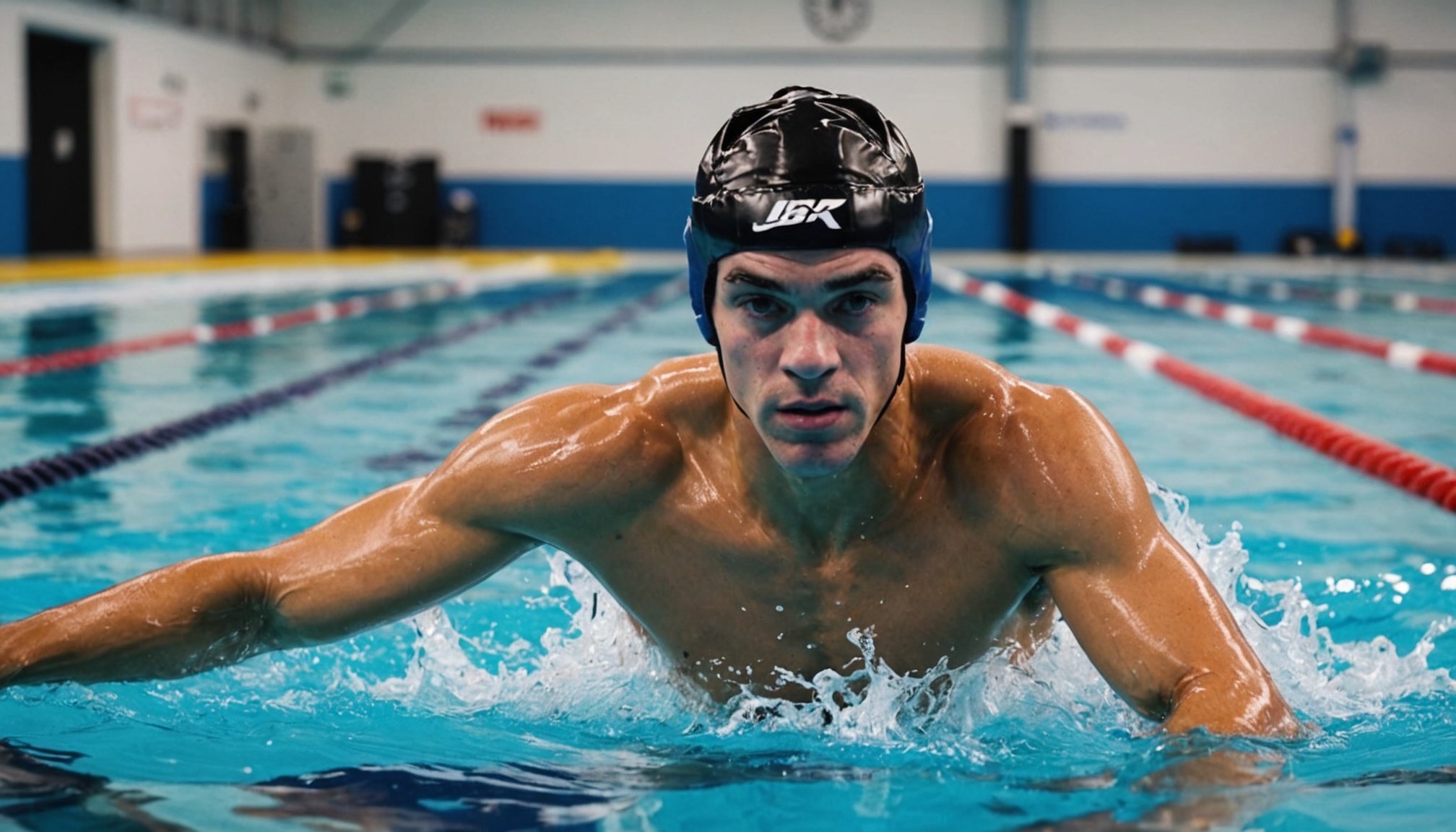Unlocking Performance: The Advantages of Adding Swimming to a UK Boxer’s Training Regimen to Swimming for Boxers
When it comes to training for boxing, the traditional regimen often includes a mix of cardio, strength training, and specific drills like pad work and shadow boxing. However, incorporating swimming into a boxer’s training program can offer a multitude of benefits that can enhance overall performance, reduce injury risk, and improve recovery. Here’s why swimming should be considered a valuable addition to any boxer’s training.
Enhanced Cardiovascular Fitness
Swimming is an excellent cardiovascular exercise that can significantly improve a boxer’s endurance and stamina. Here are a few reasons why swimming stands out:
Topic to read : Boost Takedown Speed: UK Wrestlers” Guide to Plyometric Training
Low-Impact Exercise
Swimming is a low-impact activity, which means it can be less stressful on the joints compared to high-impact activities like running or jumping. This is particularly beneficial for boxers who may already be experiencing wear and tear from their regular training sessions.
Full-Body Workout
Swimming engages multiple muscle groups simultaneously, providing a comprehensive full-body workout. This can help improve overall fitness and strength without the need for additional weight training sessions.
Additional reading : Mastering Cage Control: Effective Strategies for UK MMA Fighters to Enhance Their Technique
High Intensity
Swimming can be adapted to various intensity levels, making it suitable for both endurance training and high-intensity interval training (HIIT). For example, sprint swimming can mimic the intense bursts of energy required in a boxing match, while longer swims can build endurance.
### Example Swimming Workout for Boxers
- Warm-up: 10-15 minutes of light swimming or water aerobics
- HIIT: 4-6 sprints of 25 meters at maximum intensity, followed by 25 meters of easy swimming
- Endurance: 20-30 minutes of steady-state swimming at moderate intensity
- Cool-down: 5-10 minutes of stretching in the water
Strength and Power Development
While swimming is often associated with cardiovascular benefits, it also offers significant strength and power gains, especially when done correctly.
Resistance Training
Water provides natural resistance that can help build strength in various muscle groups. For instance, the butterfly stroke targets the upper body, including the shoulders, back, and arms, while the kick works the lower body.
Muscle Groups Engaged
Here is a detailed list of the muscle groups engaged during different swimming strokes:
-
Front Crawl (Freestyle):
-
Deltoids
-
Biceps
-
Triceps
-
Pectorals
-
Latissimus dorsi
-
Quadriceps
-
Hamstrings
-
Glutes
-
Backstroke:
-
Latissimus dorsi
-
Rhomboids
-
Trapezius
-
Deltoids
-
Biceps
-
Triceps
-
Quadriceps
-
Hamstrings
-
Breaststroke:
-
Pectorals
-
Deltoids
-
Biceps
-
Triceps
-
Latissimus dorsi
-
Quadriceps
-
Hamstrings
-
Glutes
Strength Conditioning
Swimming can be an effective strength conditioning tool when combined with specific drills. For example, using a kickboard to focus on leg strength or a pull buoy to target the upper body.
Injury Prevention and Recovery
Injury prevention and recovery are crucial aspects of any athlete’s training program, and swimming can play a significant role here.
Reduced Impact on Joints
As mentioned earlier, swimming is a low-impact activity that can reduce the stress on joints compared to high-impact sports like boxing. This makes it an excellent cross-training option for boxers looking to reduce their risk of injury.
Active Recovery
Swimming can serve as an active recovery tool, helping athletes to maintain cardiovascular fitness while allowing their muscles to recover from the intense demands of boxing training.
### Table: Caloric Expenditure Comparison Between Swimming and Other Exercises
| Activity (30 minutes) | Person (55 kg) | Person (70 kg) | Person (85 kg) |
|
|----------------|
|----------------|
| Swimming (moderate) | 180 | 216 | 252 |
| Boxing (sparring) | 270 | 324 | 378 |
| Running (8 km/h) | 240 | 288 | 336 |
| Cycling (moderate) | 210 | 252 | 294 |
| Muay Thai | 300 | 360 | 420 |
Source: [4]
Mental and Physical Toughness
Swimming, like any other form of exercise, requires mental and physical toughness, which can translate well to the demands of boxing.
Mental Discipline
Swimming long distances or performing high-intensity intervals requires a high level of mental discipline and focus. These skills are transferable to the boxing ring, where mental toughness is crucial.
Physical Resilience
The physical demands of swimming can help build resilience in athletes. Swimming through fatigue or pushing through challenging intervals can enhance a boxer’s ability to endure the physical strain of a match.
Practical Advice for Incorporating Swimming
Here are some practical tips for boxers looking to incorporate swimming into their training regimen:
Start Slow
Begin with short sessions and gradually increase the duration and intensity as you become more comfortable.
Focus on Technique
Proper swimming technique is essential to get the most out of your swimming sessions. Consider working with a swimming coach or experienced swimmer to improve your form.
Mix Up Your Strokes
Vary your swimming strokes to engage different muscle groups and avoid boredom. For example, alternate between front crawl, backstroke, and breaststroke.
Incorporate Drills
Use swimming drills to target specific areas such as endurance, strength, or speed. For instance, swimming with a kickboard or pull buoy can help focus on specific muscle groups.
Real-World Examples and Anecdotes
Several elite athletes and boxers have incorporated swimming into their training programs with great success.
Example: Floyd Mayweather
Floyd Mayweather, one of the most successful boxers in recent history, has often spoken about the importance of cross-training. While he may not swim as part of his regular routine, his use of other low-impact activities like cycling and running highlights the value of diversifying one’s training.
Example: Thai Fighters
In Muay Thai, a martial art closely related to boxing, many fighters incorporate swimming as part of their conditioning. The low-impact nature of swimming helps these fighters maintain their cardiovascular fitness without exacerbating existing injuries.
Adding swimming to a boxer’s training regimen can offer a wide range of benefits, from enhanced cardiovascular fitness and strength development to improved recovery and mental toughness. By incorporating swimming into their training program, boxers can gain a competitive edge, reduce their risk of injury, and overall improve their performance in the ring.
As any athlete will tell you, the key to success lies in a well-rounded training program that addresses all aspects of fitness. For boxers, swimming is more than just an alternative form of exercise; it is a powerful tool that can unlock new levels of performance and resilience. So, the next time you’re planning your training schedule, consider diving into the world of swimming – your body, and your boxing career, will thank you.













